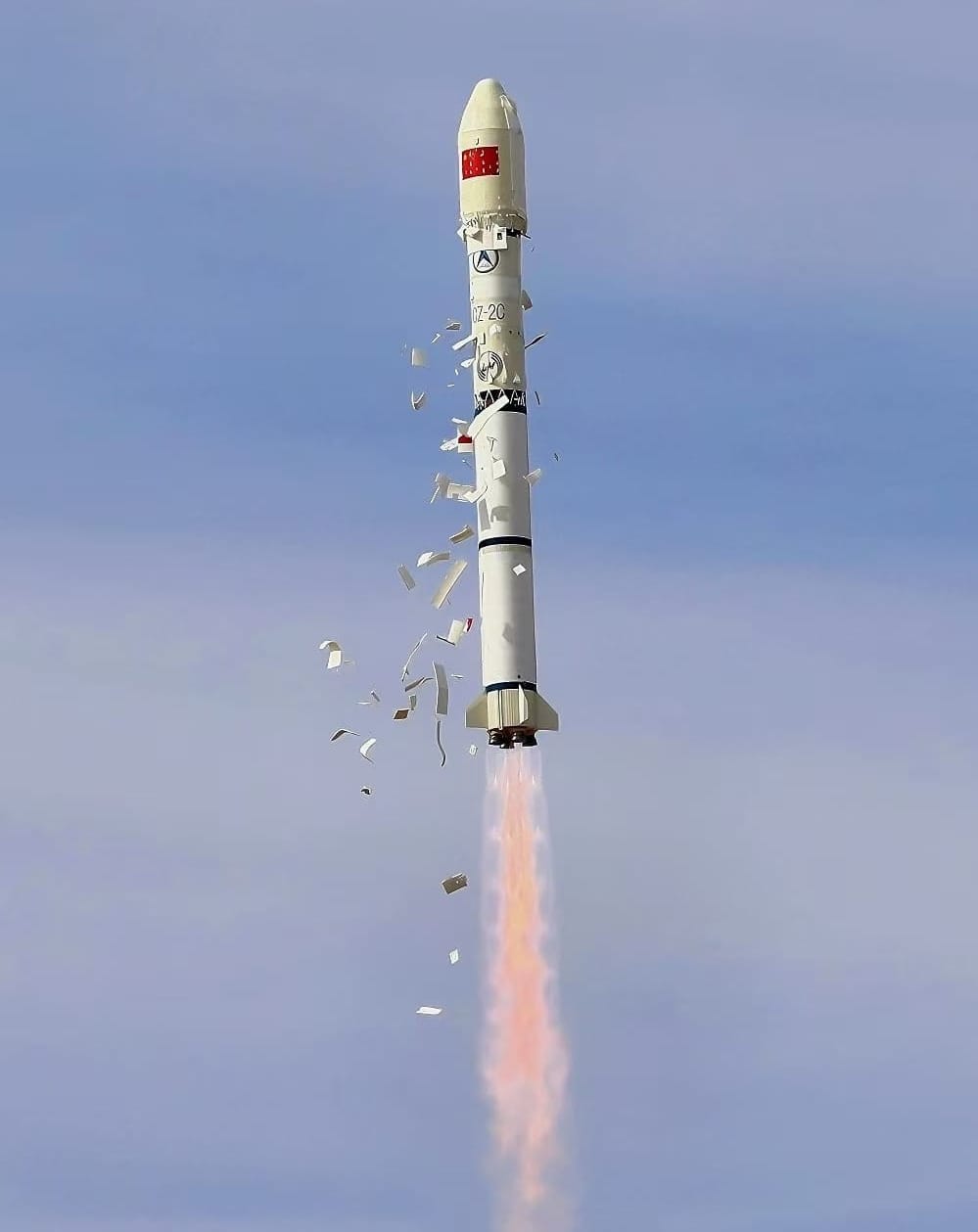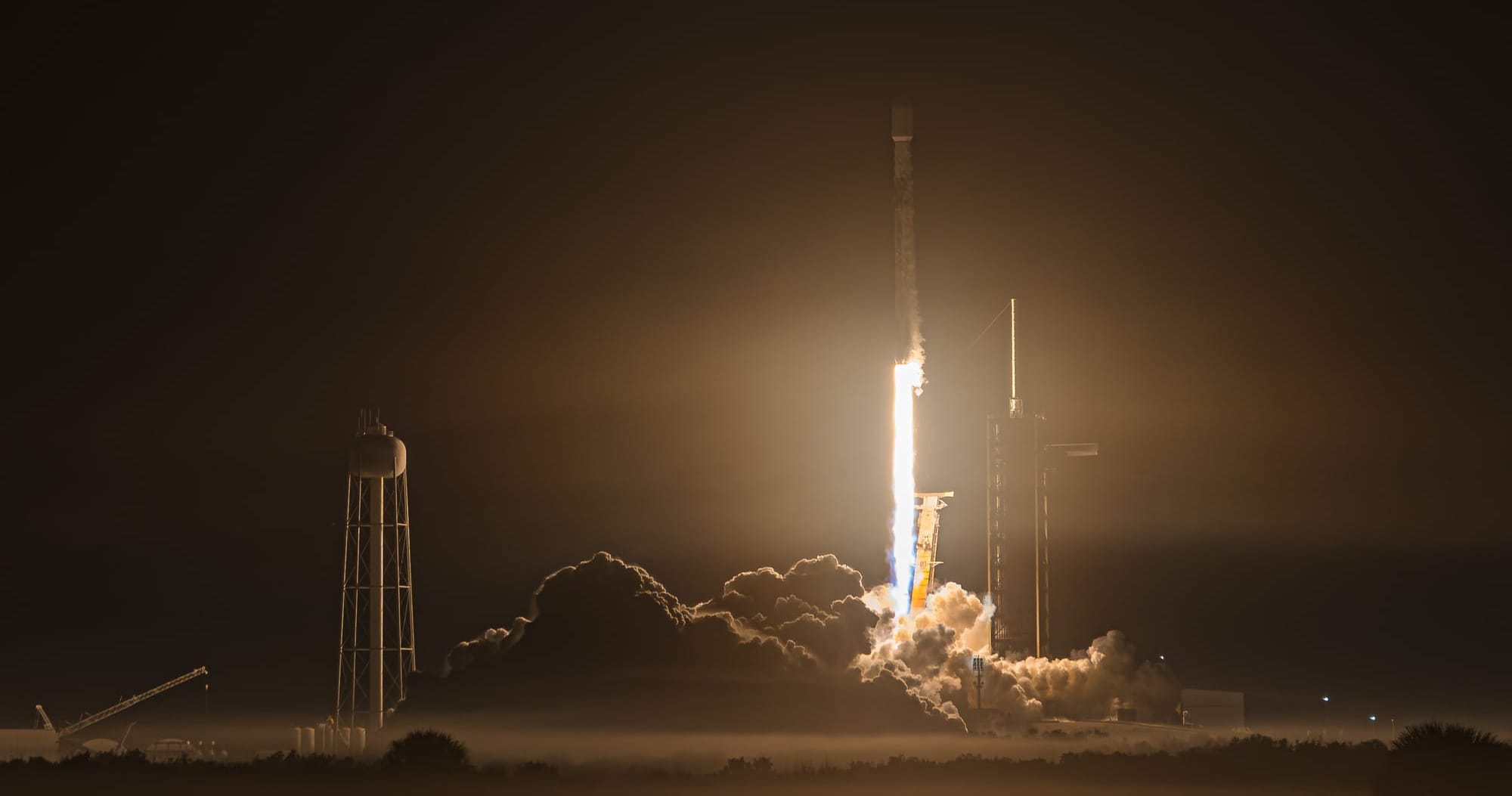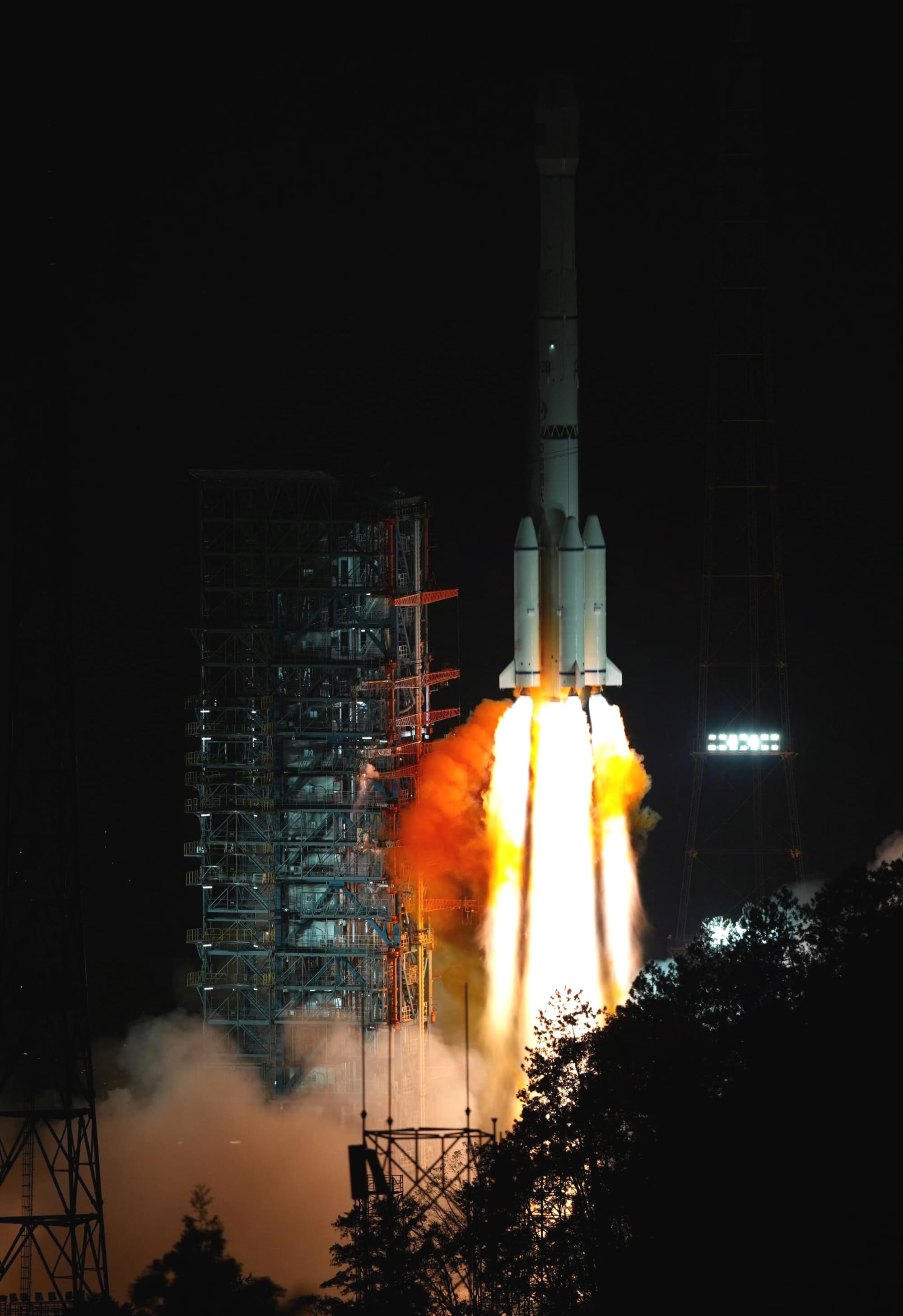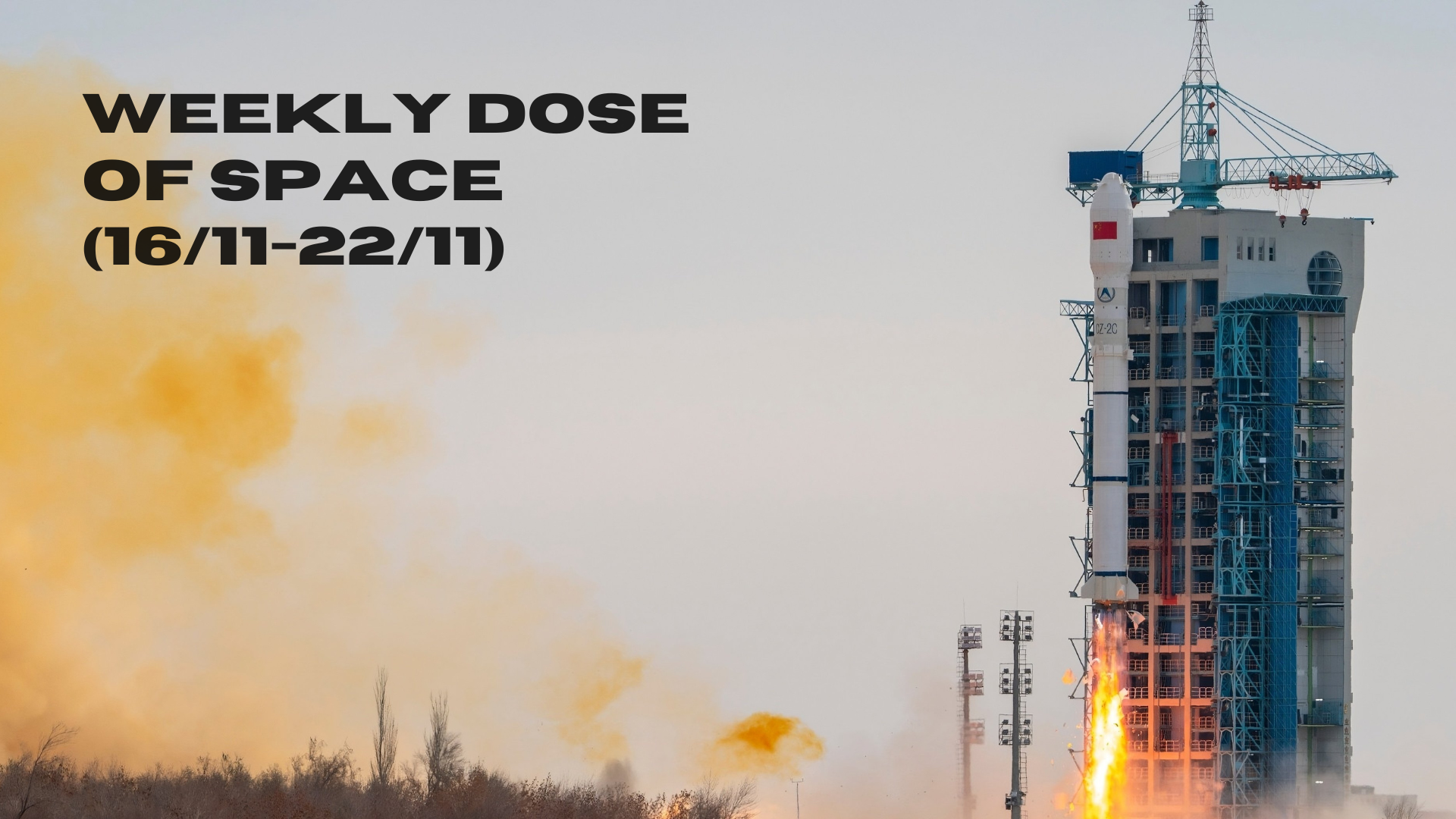Table of Contents
Welcome back to Weekly Dose of Space! This week saw eight orbital launches worldwide, with half performed by Falcon 9. News of the week had a failure with SpaceX's Starship-Super Heavy during a basic test and Amazon's mega-constellation preparing more launches following a rebrand. As always, we'll also look ahead to what the worldwide launch schedule might look like next week.
Launches This Week
November 17th - Falcon 9 with Sentinel-6B
Out of Space Launch Complex 4E, in California, a Falcon 9 carried the Sentinel-6B mission into low Earth orbit on behalf of NASA, the European Space Agency, the U.S. National Oceanic and Atmospheric Administration, and the European Organisation for the Exploitation of Meteorological Satellites to study climate change. Supporting this mission was booster B1097 for its third flight, returning to Landing Zone 4 at the Vandenberg Space Force Base.
Falcon 9 lands at LZ-4, marking the 500th overall reflight of a flight-proven orbital class rocket pic.twitter.com/irwghYWdqU
— SpaceX (@SpaceX) November 17, 2025
Falcon 9 Booster B1097 touching down at Landing Zone 4, via SpaceX on Twitter.
Deployment of Sentinel-6B confirmed pic.twitter.com/sNHVyUksNZ
— SpaceX (@SpaceX) November 17, 2025
Sentinel-6B's deployment in low Earth orbit seen by Falcon 9's second-stage, via SpaceX on Twitter.
November 18th - Electron for 'Prometheus Run'
Rocket Lab flew its Electron rocket in its suborbital HASTE (Hypersonic accelerator suborbital test electron) configuration from Wallops Island, in Virginia, on behalf of various U.S.-government-linked payloads related to missile defense.
November 19th - Falcon 9 with Starlink Group 6-94
A Falcon 9 carried twenty-nine Starlink satellites into low Earth orbit out of Space Launch Complex 40, in Florida. Booster B1085 supported this mission for its twelfth flight, landing downrange on the drone ship 'A Shortfall Of Gravitas'.

November 19th - Long March 2C with Shijian-30 trio
From the Jiuquan Satellite Launch Center's Launch Area 4, a Long March 2C flew into low Earth orbit carrying Shiyan-30A, 30B, and 30C. The three satellites are planned to verify space environment monitoring technologies.

November 20th - Electron for 'Follow My Speed'
A surprise Electron flew into low Earth orbit from Launch Complex 1A, on the Māhia Peninsula in New Zealand. Rocket Lab did not reveal the identity of the customer or how many satellites were onboard.
LIFT-OFF for Electron's 76th launch. We are on our way to space for the 2nd time in 48 hours. pic.twitter.com/SdusBocqWi
— Rocket Lab (@RocketLab) November 20, 2025
Electron lifting off from Launch Complex 1A for 'Follow My Speed', via Rocket Lab on Twitter.
November 21st - Falcon 9 with Starlink Group 6-78
Another twenty-nine Starlink satellites were launched into low Earth orbit by a Falcon 9 flying from Launch Complex 39A, in Florida. Supporting this mission was booster B1080 for its twenty-third flight, landing downrange on the drone ship 'Just Read The Instructions'.

November 21st - Long March 3B/E with TJSW-21
A Long March 3B/E flew from Launch Complex 2 at the Xichang Satellite Launch Center carrying the TJSW-21 spacecraft into an orbit peaking above the geostationary orbit belt. TJSW-21 is set to be used for communications, radio, television, and data transmission while demonstrating multi-band high-speed throughput communication technologies.

November 22nd - Falcon 9 with Starlink Group 6-79
Twenty-nine more Starlink satellites were delivered to low Earth orbit atop of Falcon 9, flying out of Space Launch Complex 40. Booster B1090 supported this mission for its ninth flight, landing on the drone ship 'A Shortfall Of Gravitas' downrange.
In Other Space News
'Upgraded' Starship-Super Heavy booster fails first test
On November 20th, SpaceX rolled out Super Heavy Booster 18, the reusable first-stage of the 'Block 3' fully reusable Starship launch system, for basic testing at the Massey's test site ahead of the twelfth flight test from South Texas. For those tests, none of the thirty-three Raptor engines or three grid fins were installed.
During a basic test using gaseous nitrogen and oxygen to prove that the booster can hold pressure early on November 21st, it suddenly failed and ruptured its liquid oxygen tank, unzipping it two-thirds of the way up. That deformed Booster 18's lower half while making it structurally unsafe, now being mostly held up by internal plumbing.
Booster 18 seems to have just exploded during testing at the Massey outpost. pic.twitter.com/fmVdYPmWvA
— LabPadre Space (@LabPadre) November 21, 2025
Super Heavy Booster 18 experiencing its anomaly on November 21st, via LabPadre on Twitter.
In the aftermath of the failed test, SpaceX wrote the following on Twitter:
"Booster 18 suffered an anomaly during gas system pressure testing that we were conducting in advance of structural proof testing. No propellant was on the vehicle, and engines were not yet installed. The teams need time to investigate before we are confident of the cause."
Booster 18 was planned to prove out a new launch pad at Starbase and accelerate Starship-Super Heavy's test campaign, ahead of basic architectural proving flights (Starship-to-Starship refueling) for a NASA-contracted lunar lander. According to media around SpaceX's South Texas site, a possible replacement booster to fulfil Booster 18's role has not begun stacking with hardware scattered around.
About a week ago, Politico obtained a schedule for major Starship missions that SpaceX plans to present to NASA regarding its lunar lander contract. That would have a single Starship-to-Starship refueling test by June 2026, an uncrewed lunar lander proving mission by June 2027, and a crewed lander for the Artemis III mission ready by September 2028. Those milestones have likely moved back after this week, as the twelfth flight of Starship-Super Heavy, planned to use Booster 18, was targeted for early January 2026.
Amazon's mega-constellation rebrands, prepares more launches

Amazon shared on November 13th that its low Earth orbit connectivity mega-constellation, previously known as 'Project Kuiper', is rebranding to 'Amazon Leo', as a reference to the orbital regime. The rebrand does not affect the constellations rollout or previously stated plans, according to the company.
This week, now rebranded, Amazon shared that its Leo teams have begun shipping satellites to French Guiana for the constellation's first launch with Arianespace, atop of the first Ariane 64 rocket in early 2026. Before that, a fourth launch atop of United Launch Alliance's Atlas V is planned for mid-December.
To date, six groups of Amazon Leo satellites have been delivered to low Earth orbit for a total of 153 operational satellites. The latest additions were added on October 14th.
What to Expect Next Week
November 23rd - Falcon 9 with Starlink Group 11-30
A Falcon 9 is set to deploy a batch of Starlink satellites into low Earth orbit from Space Launch Complex 4E.
November 25th - Long March 2F/G with Shenzhou-22
The Shenzhou-22 spacecraft is being sent up to China's Tiangong Space Station, via a Long March 2F/G flying from the Jiuquan Satellite Launch Center, next week to restore the capability to return scientific cargo alongside crews, following a debris strike to the Shenzhou-20 spacecraft. Taikonauts Zhang Lu, Wu Fei, and Zhang Hongzhang will be receiving the new spacecraft.
November 25th - Angara 1.2 with an unknown payload
From the Plesetsk Cosmodrome, an Angara 1.2 is set to launch into low Earth orbit carrying a currently unknown payload.
November 26th - KSLV-2 with CAS500-3
South Korea's CAS500-3 (Compact Advanced Satellite 500-3) Earth observation technology verification will head into sun-synchronous orbit atop of the country's KSLV-2 launch vehicle.
November 26th - Falcon 9 with Transporter-15
SpaceX is preparing to launch its Transporter-15 sun-synchronous orbit rideshare mission from Space Launch Complex 4E atop of Falcon 9.
November 27th - Soyuz 2.1a with MS-28
Out of the Baikonur Cosmodrome, a Soyuz 2.1a is planning to chase the International Space Station while carrying the MS-28 mission, with cosmonauts Sergei Kud-Sverchkov and Sergei Mikayev, as well as NASA astronaut Christopher Williams.







